Dear friends,
I have shared the following story before in a few different contexts, but it came back to me as I was writing my sermon on this rainy Lenten Friday.
A colleague of mine in England once spent the season of Lent in their parish completely reimagining their Sunday services. During that Lent, they even cut the sermon, where the intention was that instead of preaching to one another, the priest and congregation could spend more time praying with one another, and, in so doing, praying with God together more fervently. Ever since I learned this, I have been fascinated with the idea of removing the sermon (don’t get too excited …) and replacing it with something else. This is not because I’m trying to be lazy or controversial, but because, as I preached about a few weeks ago, there is something significant, especially in a season like Lent, about reorienting ourselves towards God in ways which are not simply different, penitent, or more focused, but communal, purposeful, perhaps even radical. In one school I served as a chaplain, we often combined the homily with poetry, music, dance, or drama. Being creative with our worship, yet still within that time-honored tradition and structure, helped many of our students who struggled with faith to find something in the liturgy which spoke to them. From there, they could engage in ways which helped bring them, as we used to put it in Church of England Schools, to “the threshold of worship.”
It may sound strange, but I’ve always found praying quite a difficult thing to do. Not that I don’t try! Besides, the fact that I now do this for a living means there’s no escape. But in all seriousness, praying is probably one of the most challenging things Christians are called to do, despite the immediate necessity. Whether it is finding the time in a busy day to just do it, to finding a form for prayer that helps one engage more deeply, to praying “off the cuff” when someone comes up to you and asks you to pray for them in public, praying is hard. But we can do it …
While I probably won’t cut the sermon this Sunday(!), there is something rather special about those moments during our liturgy you suddenly realize that we’re all on the same page. When everyone in the room is praying together, and not simply following the formula (as wonderful as the Prayer Book is) but praying in a way which feels, or essentially is authentic, uninhibited, organic, and where our worship becomes less self-conscious, less performative, and more about humbly acknowledging and embracing the presence of God. The style of the words, then, suddenly doesn’t seem as important.
With every blessing,
Ed.
The Rev. Edward Thornley
Rector of The Episcopal Parish of St. John the Evangelist


